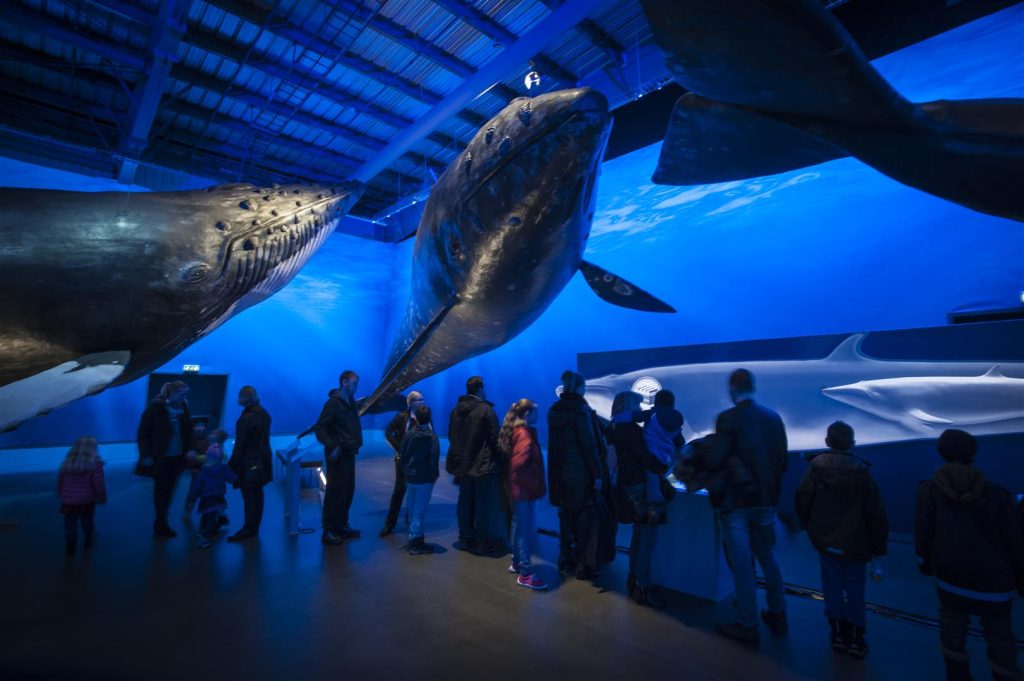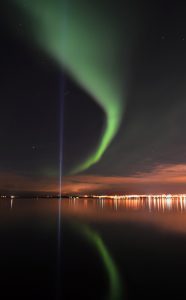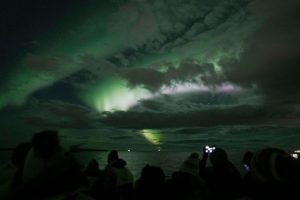You’re about to start your Northern Lights hunt. Here’s what you must know.
The decision has been taken! You’ve decided to travel to the most beautiful country in the world (no, we’re not biased at all!) to view the Northern Lights, one of the most spectacular natural phenomena there are. Congratulations! Now, let’s talk about what to expect and what your options are.
What’s the best time to view the Northern Lights?
First off, to see the lights, the conditions must be right. The skies have to be relatively clear of clouds – that’s the most important thing. The clouds can block your view of the sky and the lights, but with partial cloud coverage you can still sometimes see the lights.
Second, it must be dark out. That means that the summer months in Iceland are out of the question, as it’s bright all night long! So the best time is to visit between late August and late April.
Thirdly, you’ll want to get out of the city lights, thus driving (or sailing!) a little out of towns and cities.
After that, it’s a mix of patience and luck. The Northern Lights are totally natural phenomenon and, like trying to catch a glimpse of a deer in the forest, you don’t have much to say about your success. Except wait and keep a watchful eye.

Breathtaking Northern Lights over Faxaflói bay in September 2022
Northern Lights tours – what are my options?
Iceland offers several options for you to help you see the aurora. There are many bus companies that will take you outside city limits, drive you around while trying to spot where the lights may be happening. There’s also the option of renting a car and going by yourself to look. And then there’s us – we take to the seas to hunt for this spectacular show. But why should you consider taking a boat to see them? Well, in a few words, it’s way more fun.
The fact of the matter is that the chance to see auroras from the sea is not higher than on land. In fact, the chances are usually very similar. So why is the boat a better option? Picture this. You’re on a crowded bus with dozens of other people, driving for a while just to leave the city, all the while you’re stuck in your seat and unable to go outside until the bus driver decides to stop. Once you do, you can finally get out and breathe in some fresh air and hopefully enjoy the light show… before having to be stuck in your seat for another 1-2 hours on the way back. And hopefully you dressed warm enough, as well.

Spectators photograph the Northern Lights from a boat
Advantages of seeing the lights by boat
Being on a boat with us opens up so many possibilities. We depart from the Old Harbour in Reykjavík, just a 5-minute walk from the city centre (but if you’re staying farther away, we offer an optional pickup and drop-off service to major hotels and guesthouses).
During the whole duration of the trip you are able to stay outside, watching the skies, enjoying every minute of the trip and maximising your chances of seeing the Northern Lights. Or, if you’re feeling cold or want to take a break, you can go inside and enjoy our comfortable and warm cafeteria and bar, maybe have a snack or a drink. But also, all our passengers can borrow our wonderful thermal overalls for free, which can make it feel downright cosy sitting or standing outside.
On our way out of the harbour and back in, you get a chance to view the magnificent Reykjavík city lights and the Harpa concert hall from the sea, which is a great start and end to the tour.
And the best part – on every tour, an experienced and motivated guide will tell you all about the science and magic behind the Northern Lights! We aren’t the only company in Reykjavik offering Northern Lights by Boat, but we were the first company in Iceland to do so. That gives us a lot of experience, which we are happy to pass along to you.

Dancing Northern Lights above the mountains
So you’re ready to go? Great! Here are some practicalities to prepare for the tour.
- Warm clothing is a must. Our overalls are amazing, but you should still have something warm underneath. We recommend thermal base layers, preferably wool or a wool blend, underneath your pants and shirt. If you’re looking for a warm mid layer, there’s nothing better than an Icelandic wool sweater – they are sold in many souvenir shops around the country! A windproof and waterproof jacket on top of the sweater will really trap the heat as well. And don’t forget your gloves and hat. (If you forget those, we do sell them on the boat too.)
- Sturdy shoes are important. If you are visiting Iceland in winter, streets and walkways around the city and harbour can be often icy and slippery. So, leave those high heels and Crocs at home. Hiking boots with thick soles will keep you warmer, and more surefooted as well. Our crew always does their best to sand and de-ice the outside decks of the boats and the ramps as well, but weather can change here in Iceland faster than you can say Eyjafjallajökull.
- Taking pictures? Your camera must be up to the task. Many people watching the auroras prefer to just enjoy the moment, and not worry about taking photos. If you’re one of those people, then fantastic! As we always say, never forget to take pictures with your heart! But if you want to try and capture the auroras on camera to take home some souvenirs, then you must have a camera that supports them. Look for our next blog articles to see details on Northern Lights photography.































